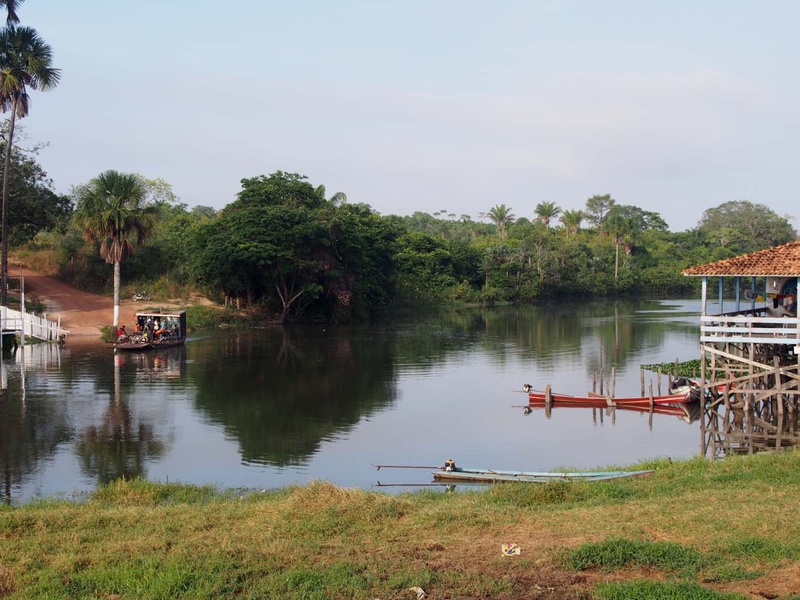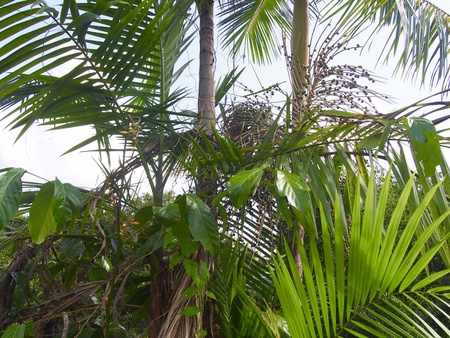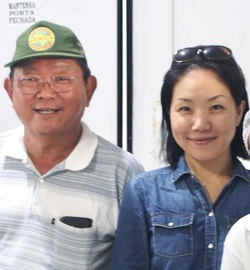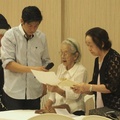"This is where the Amazon immigrants first arrived."
Wataru Sakaguchi Francisco, former president of CAMTA (Tomé-Açu General Agricultural Cooperative), told us about a small riverbank on a tributary of the Amazon River. 189 people from 43 families arrived here in 1929. They first started producing cacao. They worked with South America Colonization Co., Ltd., which was established with investment from Kanegafuchi Spinning Co., Ltd., which was instructed by the Japanese government to develop the Amazon. In 1931, the Akara Vegetable Association was formed, and they also began growing vegetables and rice, but an increase in tropical disease patients and the failure of cacao cultivation due to a lack of knowledge of tropical farming methods forced South America Colonization Co., Ltd. to withdraw.
The settlers, who were now in charge of running the colony themselves, reorganized the association into the Akara Industrial Association. They worked hard at agriculture to support themselves, but later, a malaria epidemic caused many to leave Tomé-à-su.
During the war, the devastation of the war extended to the cooperative's business and the difficult situation continued, but after the war, there was a major event that must not be forgotten when talking about the history of Tome-Asu. Pepper, which was brought from Singapore in the 1930s, generated enormous wealth. The "black diamond" enriched the lives of many settlers, and "pepper palaces" were built along the coast.
But the prosperity did not last long. In the 1960s, disease devastated the pepper crop, and many farmers again moved in search of new areas for cultivation.
At that time, the late Noboru Sakaguchi, a graduate of Tokyo University of Agriculture who emigrated to the area in 1957 and father of Wataru, who was introduced at the beginning of this article, discovered that the risk of pathogens could be avoided by planting pepper together with other crops. Inspired by the lifestyles of the indigenous Amazonians, who lived by planting various crops together, he came up with the idea of planting cacao and pepper together. This was the beginning of agroforestry. Cacao, which prefers the shade, began to grow well in the shade of pepper trees, and gradually the number of cultivated crops increased, including acai, acerola, and passion fruit. In this way, creating an environment close to nature prevented the spread of pathogens. By planting crops with different harvest times together, it became possible to earn a stable income every year.
In the early 1990s, CAMTA's current president, Michinori Konagano, went from house to house to teach these techniques in an effort to improve the lives of monoculture farmers. As a result, the lives of many people became more stable. Fewer people turned to crime due to financial difficulties, and public safety improved.
After being shown around the vast farmland and learning about agriculture in Tomeassu, we took a break at Mr. Sakaguchi's house.
In 2014, Sakaguchi donated 3,240 square meters of land to the local Federal Agricultural and Livestock University of Amazonia (UFRA) for free. He said people around him asked him if he had gone crazy, but he also said, "I wanted to help many young people learn about agriculture."
"It's no good if only we Japanese people benefit. We need to think about the lives of local Brazilians, too, otherwise society as a whole will not improve. I want to spread the techniques I inherited from my father so that agriculture in the whole of Tome-Acu will thrive. I see that as my role."
Mr. Sakaguchi's words, which he spoke slowly, were heavy and touched my heart. The will of the young man who entrusted his dreams to Amazon has been firmly passed on to his son. His father must be very happy about this.
© 2016 Asako Sakamoto









